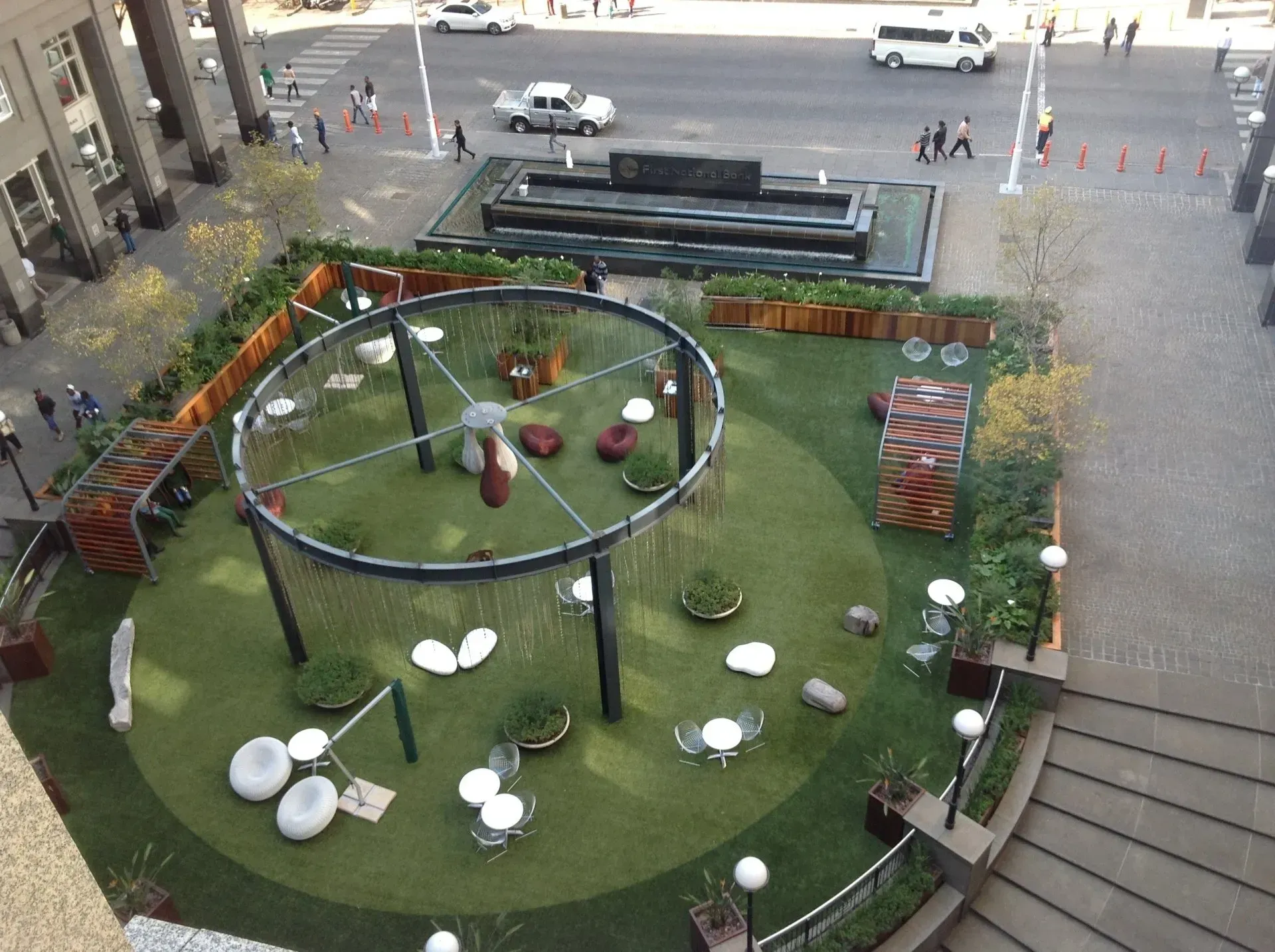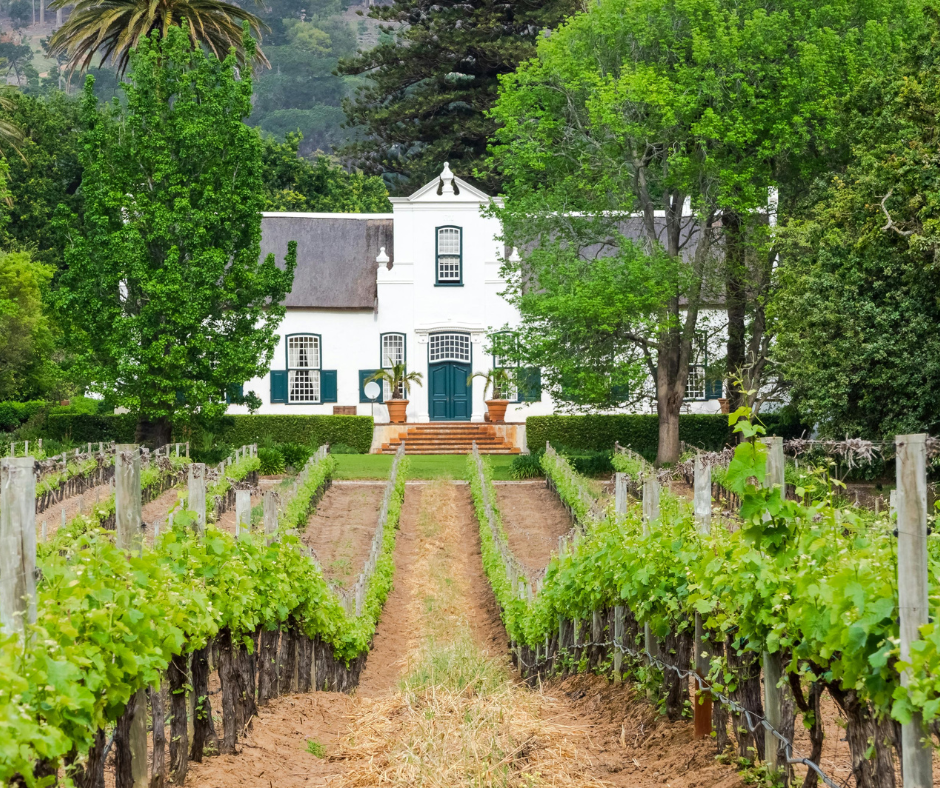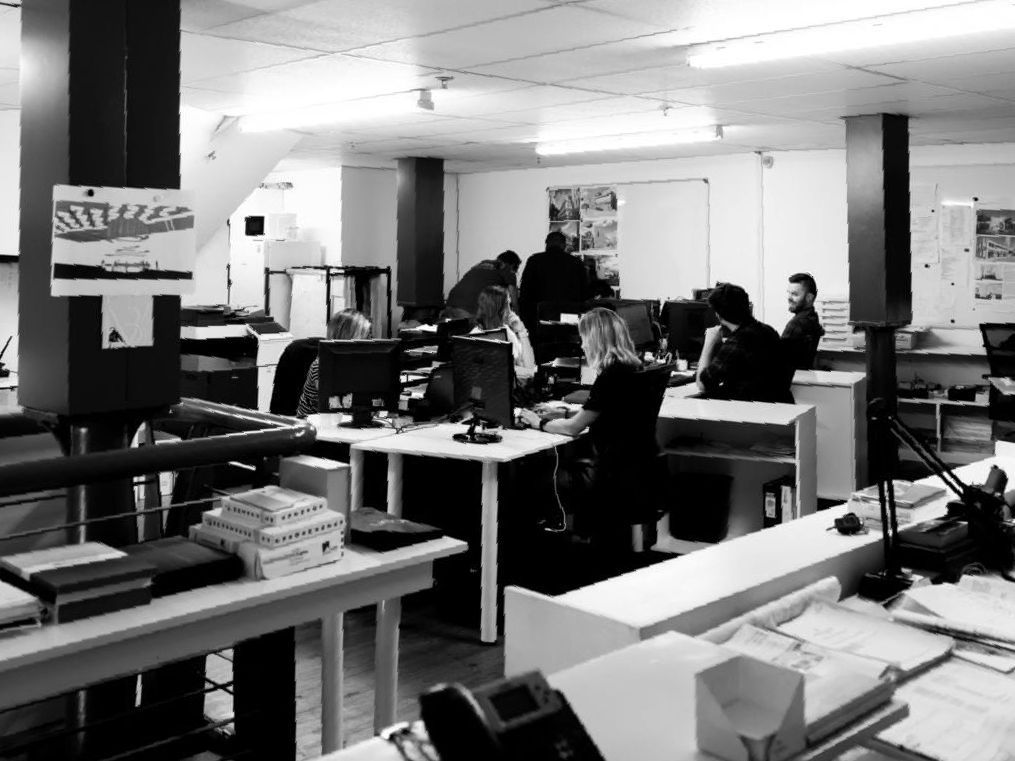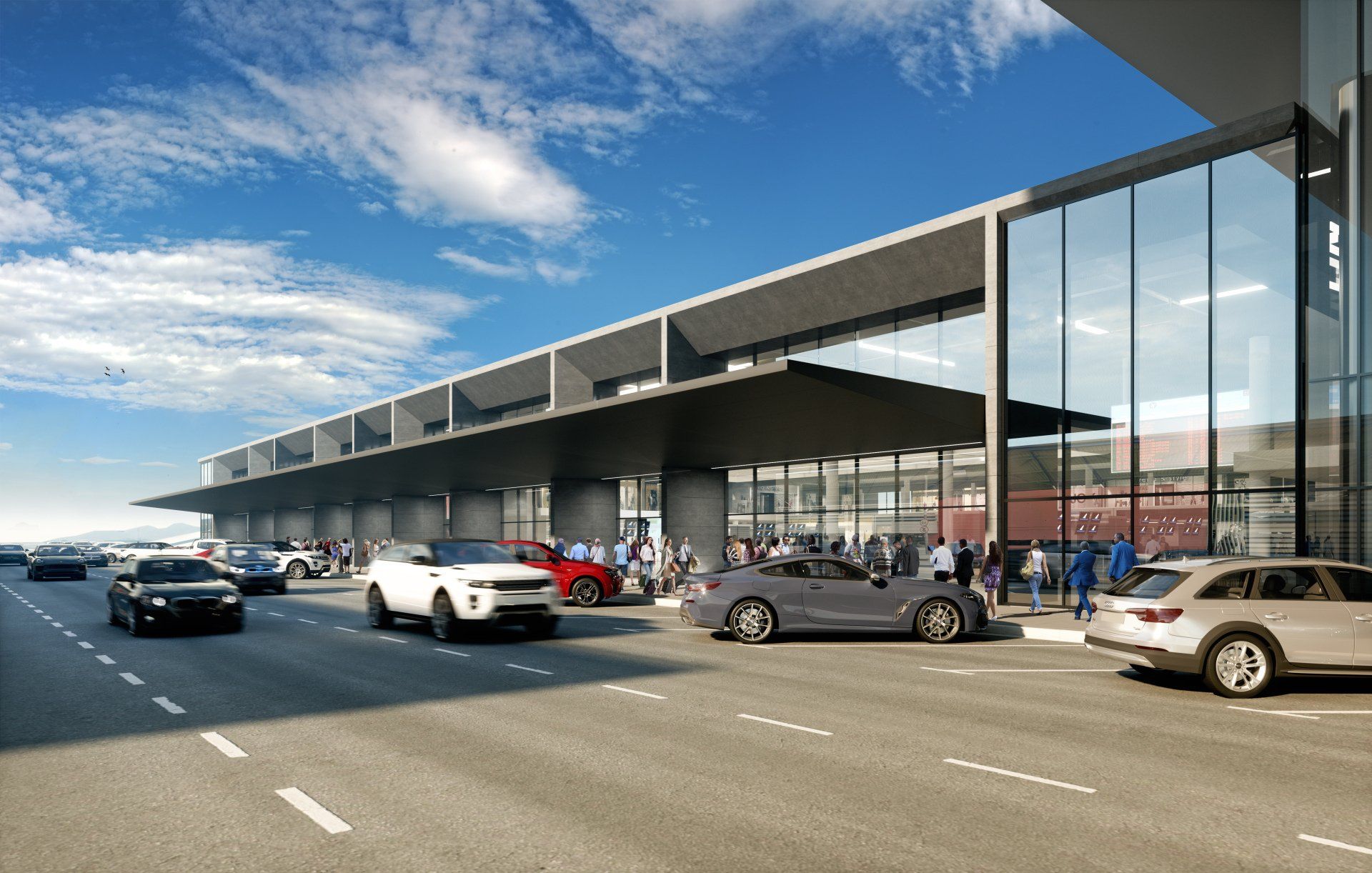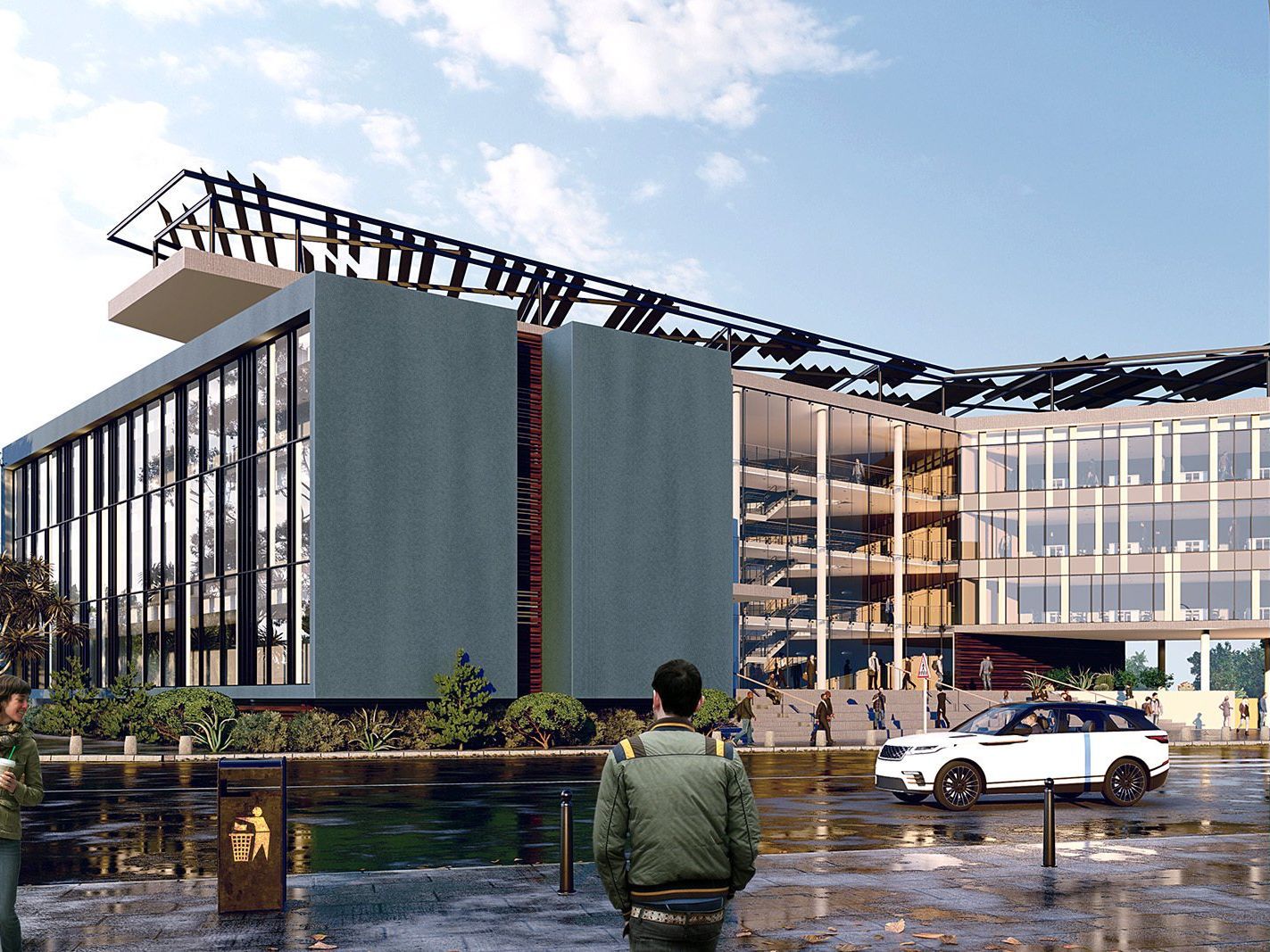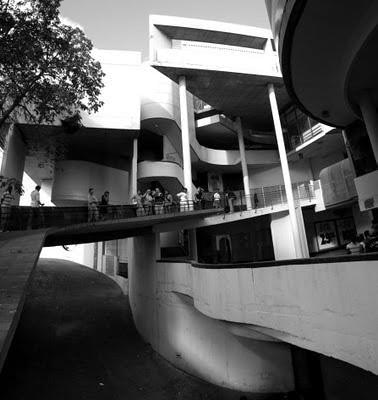It’s the Kruger Shalati Boutique Hotel that had the fantastic idea of converting these stunning 1950s train cars into luxury guest rooms. There have been many train car conversions used in boutique hotels before, but the location of Kruger Shalati is what makes it truly unique.
Imagine completely repurposed 1950s train cars, gorgeously styled and set upon a bridge high above the Sabie River. With spectacular views of the river and wildlife right from your bed, what more could you ask for?
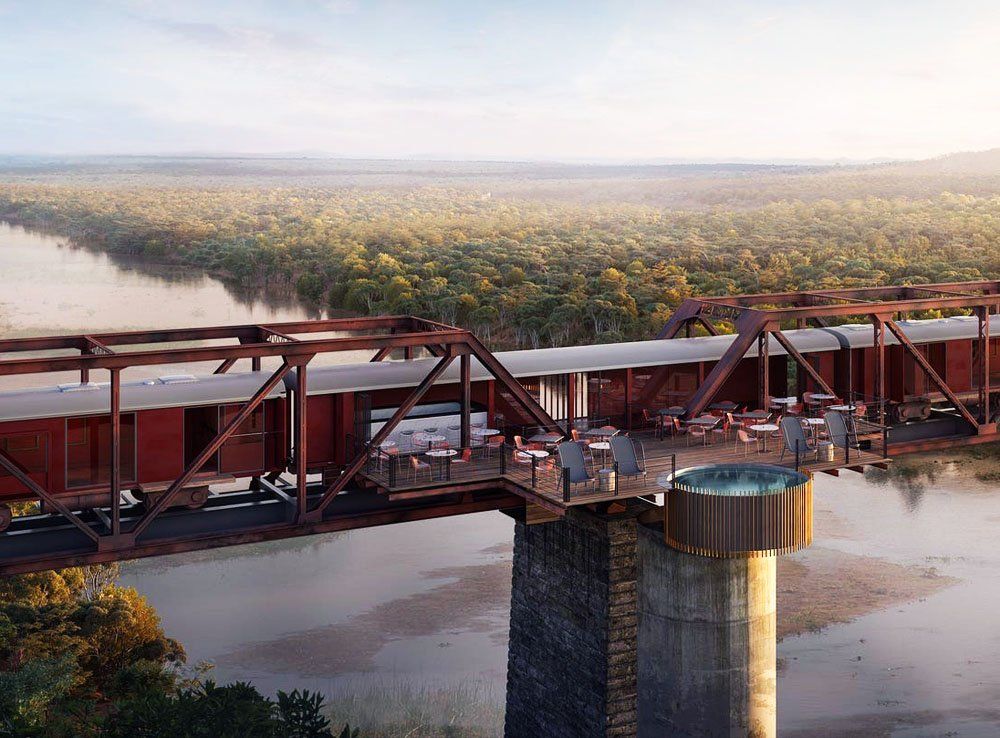
The Divine Rooms At Kruger Shalati
Kruger Shalati offers 31 guest rooms in total. There are 24 carriage rooms and 7 bridge house rooms. The train rooms are glass-walled and offer incredible views of the Sabie River and surrounding natural area.
The interior design of the rooms is modern but takes inspiration from local African art and craft, and celebrates African culture with respect and cohesion.
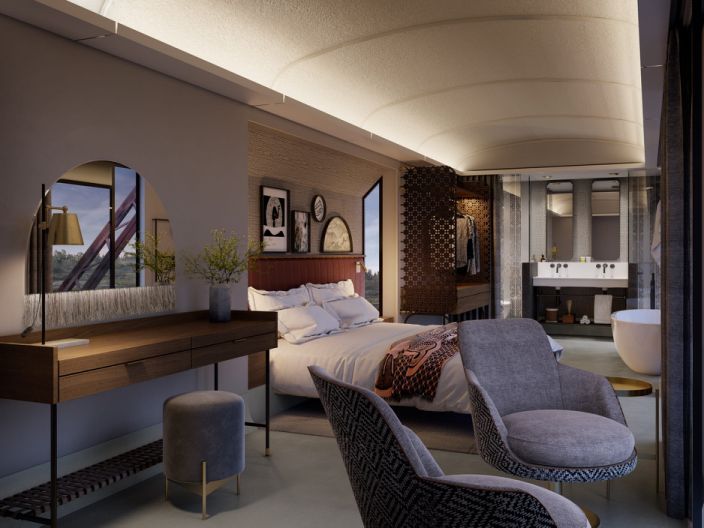
Other Exciting Features
The experience of staying at Kruger Shalati also includes the use of their deck and small pool! Enjoy a casual swim while you spot crocodiles and hippos in the river below.
Speaking of animals, the boutique hotel has an incredible location for bird watching and spotting other animals. It would not be uncommon for you to notice elephants and buffalos as well as a variety of smaller mammals.
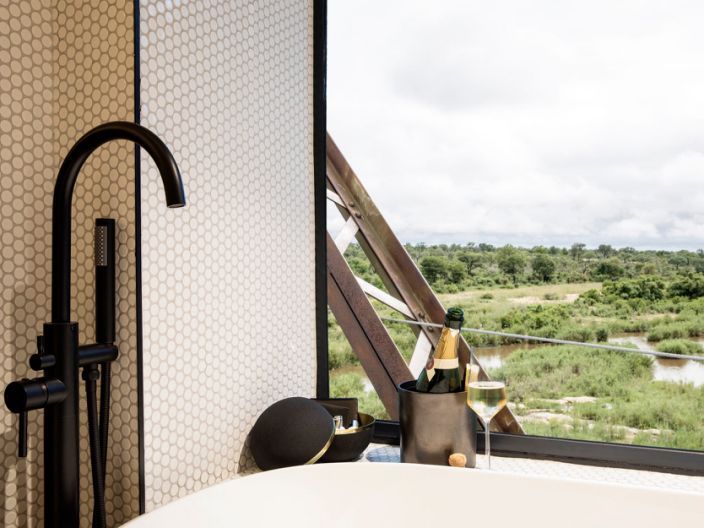
Where Is It Exactly?
Kruger Shalati is located on a bridge on the Sabie River within Suzuka. Suzuka is the largest rest camp within the Kruger National Park. If you are driving from Johannesburg, you can expect the drive to take around 5 hours.
The bridge is called the Skukuza bridge, and it is where some of the Kruger Park’s very first visitors stayed overnight in the 1920s. Kruger Shalati’s inspiration comes from those very first visitors, and their aim is to take guests back in time while still offering all the modern amenities that could be wished for.
For more information about our innovative architectural services and on how we can assist you, get in touch with our team of professional architects and designers in Durban and Cape Town.

Cape Town
109 Waterkant Street
De Waterkant Cape Town
South Africa, 8001
Durban
Rydall Vale Office Park
Rydall Vale Crescent
Block 3 Suite 3
Umhlanga, 4019
Website design by Archmark


